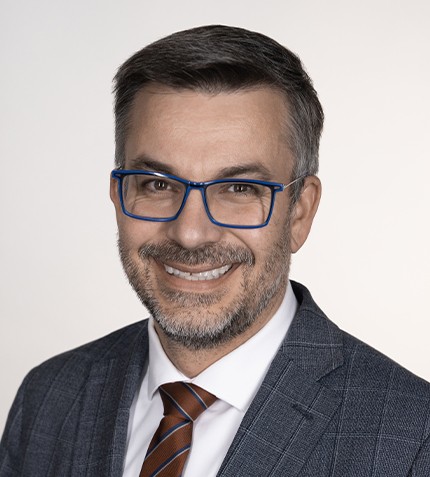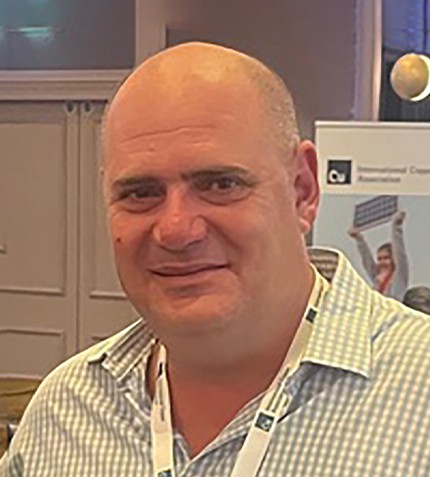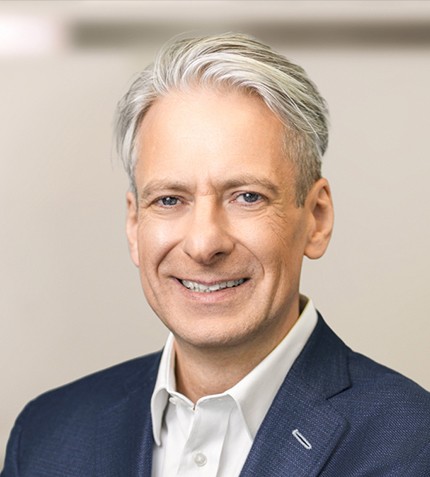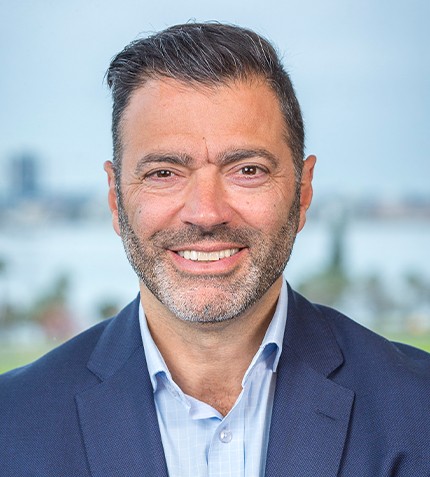
"There is also a huge focus on decarbonization, and the majority of our mining clients are looking for solutions to reduce their energy consumption and incorporate clean energy sources into their operations."
Dominic Tremblay
VP AND GENERAL MANAGER QUÉBEC, MINING AND METALLURGY, ATKINSRÉALIS
What have been the main highlights and achievements of AtkinsRéalis’ mining and metallurgy division in 2023?
2023 was a fantastic year marked by continued market growth and expansion of our client portfolio. AtkinsRéalis continues to foster strong partnerships with the major mining companies in Québec and is proud to have successfully delivered projects with these long-term clients for approximately 40 years. The Company continues to increase its capabilities in the pit-to-port services, which include project management and delivery, infrastructure engineering, process engineering and plant design, tailings and water management, environmental and remediation services, community engagement, earthworks, roads, rail, energy, technology, airports, and ports. We also assist clients in transitioning toward a greener future by incorporating decarbonization, digital transformation, and sustainability solutions.
Can you highlight a recent project in Québec where AtkinsRéalis added value to a client?
AtkinsRéalis worked on a mine-to-mill road traffic simulation on a project to identify how to optimize the transportation of over 3 million t/y of ore. Through numerical simulation and digital modeling we were able to pinpoint where to decrease the carbon footprint, maximize timing, and reduce bottlenecks. We also conducted groundwater flow simulations on a project where we modeled the flow and potential in-pit tailings and waste rock deposition to validate the best place to start reducing the overall mine footprint and mitigate environmental risk. Finally, we undertook regrinding and gravimetry implementation in a mill to improve gold recovery, increase the efficiency of the overall process, and optimize the plant’s carbon footprint.
Are you seeing any commodity-driven demand trends?
Demands are market-motivated, and with lithium and nickel currently experiencing a downcycle, there has been a shift in interest and investment. We expect AtkinsRéalis’ growth in 2024/2025 to be driven mainly by gold, copper, aluminum, and the critical minerals market despite a decrease in certain commodities’ value.
There is also a huge focus on decarbonization, and the majority of our mining clients are looking for solutions to reduce their energy consumption and incorporate clean energy sources into their operations. AtkinsRéalis is working closely with clients on implementing electrification strategies and reducing fossil fuel consumption as they transition towards cleaner energies.
What is the advantage of Québec in this push for decarbonization?
Over 40% of Canada's water resources are in Québec and therefore, the province benefits greatly from hydropower. Although Québec has a clean energy grid, mining projects are still competing for power. There is a need for all stakeholders to come together to ensure that energy consumption is optimized and that other clean energy solutions, in addition to hydropower, are incorporated into mine designs from the early stages to increase the province’s energy capacity.
Project design and engineering are still mainly cost-driven; however, considering the drive toward decarbonization and a greener future, the adoption of best practices and sustainable solutions that may be more costly – such as energy efficiency, water, and waste treatment, or process optimization-related – should nonetheless be incorporated into projects from the start to ensure compliance with regulations that are becoming more stringent, and to avoid large capital expenditures to bring an operation up to global standards. AtkinsRéalis has a world-class team of engineers that can assist our clients in bringing innovation into their operations and ensure their facilities meet global standards from the earliest stages of the project.
We are seeing actions taken not only in the energy efficiency space but also in the tailings and wastewater treatment areas, as well as in mine closure and remediation. Mine reclamation is no longer an issue that is pushed back to the later stages of a project, but is already considered from the earliest stages of mine design to ensure that everything that will be implemented during the project lifecycle will be sustainable in the long-term, that the closure period will be shorter, and that the funding for reclamation will be available when the time comes. Today, ESG is heavily embedded in every aspect of the mine design and engineering services AtkinsRéalis offers to ensure that we are building more sustainable mines for the future.
What are AtkinsRéalis’ key priorities moving forward?
We position ourselves to be able to anticipate our client’s needs in terms of innovation, digital transformation, sustainability, and governance.










